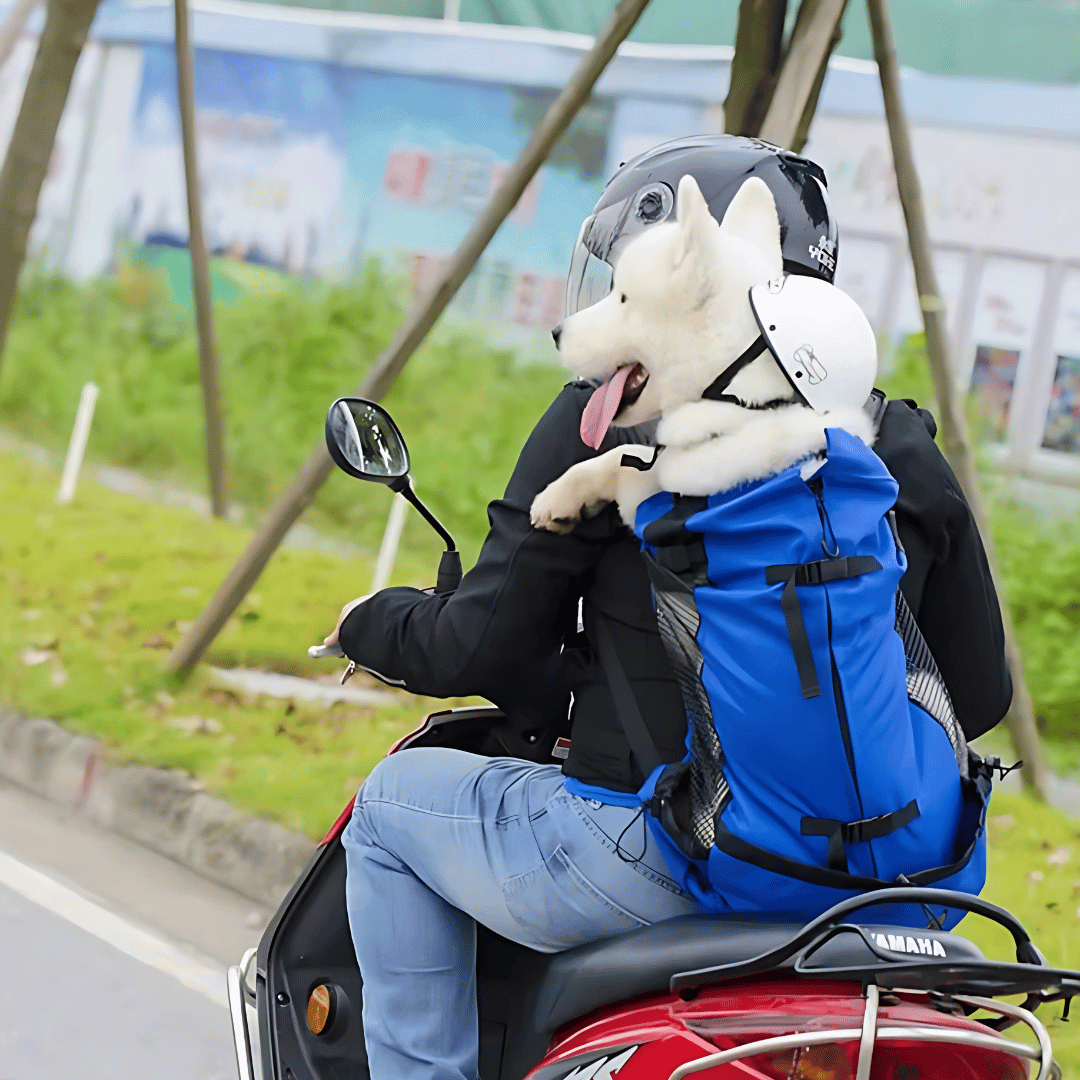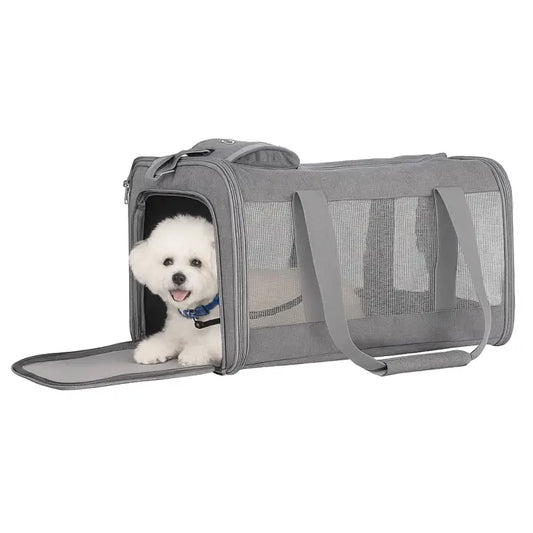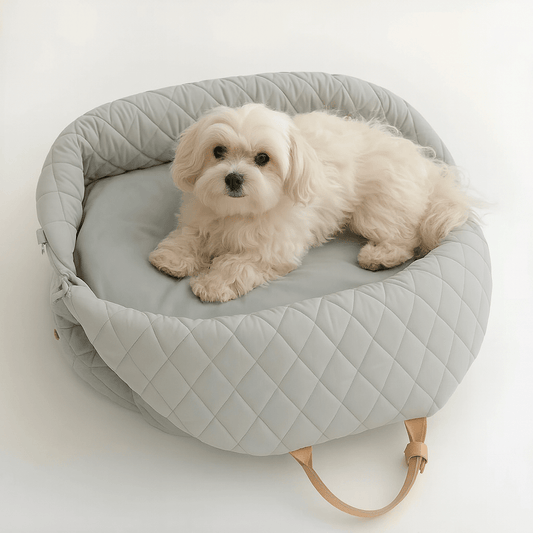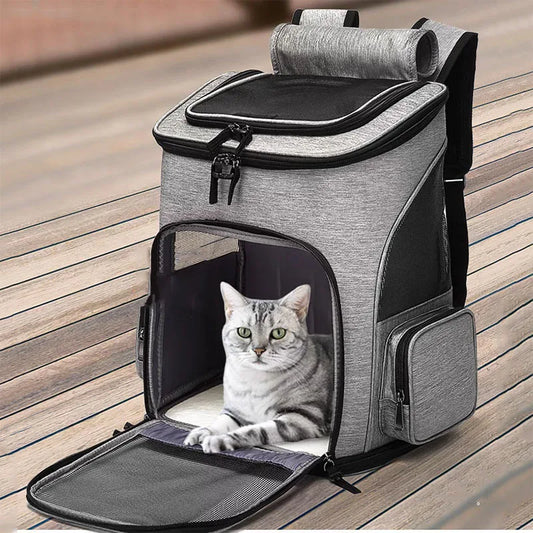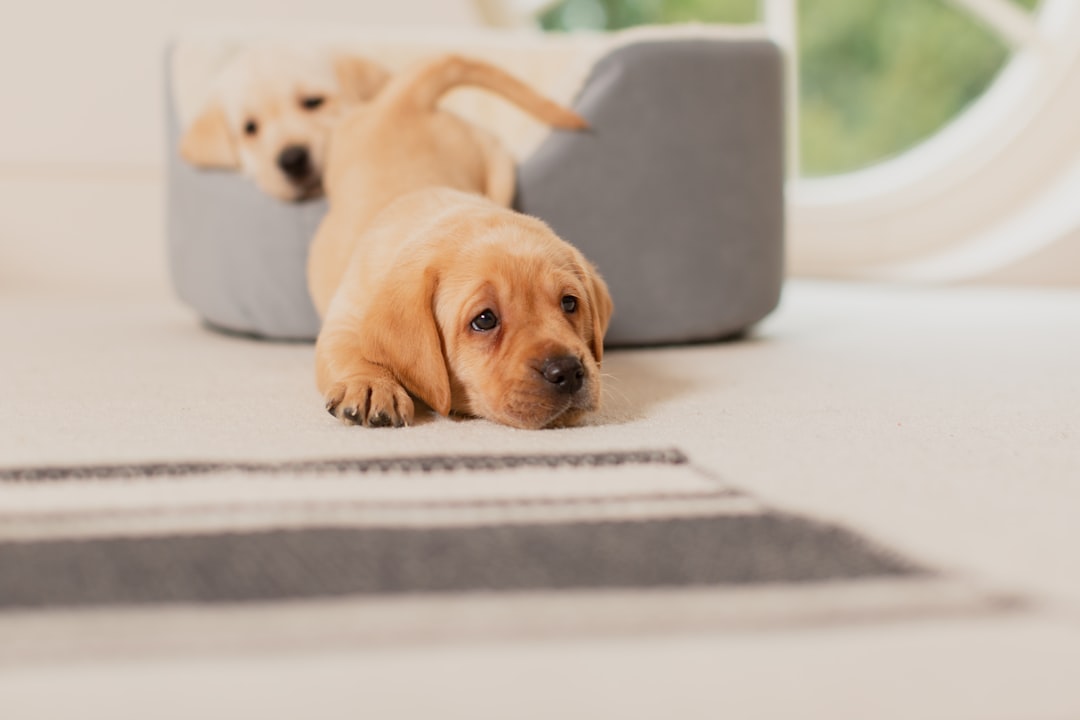
Potty Perfect: A Housebreaking Guide for Puppies
Share
House training is a crucial aspect of raising a well-behaved dog. It not only ensures a clean and hygienic living environment but also strengthens the bond between dog and owner.
Effective potty training requires patience, consistency, and positive reinforcement. It's essential to understand that puppy accidents are a normal part of the learning process.
This article will guide you through the essentials of dog training, focusing on potty training techniques and strategies for managing accidents, helping you to achieve a well-trained and well-behaved pet.
Key Takeaways
- Understanding the importance of house training
- Effective potty training techniques
- Strategies for managing puppy accidents
- The role of positive reinforcement in dog training
- Tips for achieving a well-behaved pet
Understanding the Basics of House Training
Effective house training is built on a foundation of understanding the psychological and developmental needs of your puppy. It's not just about teaching your dog where to go potty, but also about creating a nurturing environment that fosters learning and growth.
The Psychology Behind Successful House Training
The psychology behind house training revolves around positive reinforcement, consistency, and clear communication. Dogs thrive on routine and clear boundaries, making it essential to establish a consistent training regimen. Positive reinforcement techniques, such as treats and praise, encourage good behavior, while consistency helps your puppy understand what's expected of them.
Age-Appropriate Expectations for Puppies
Puppies develop at different rates, and understanding age-appropriate expectations is crucial for successful house training.
8-12 Week Old Puppies
At this age, puppies are still learning to control their bladder and bowels. Frequent potty breaks, ideally every hour, are essential. Owners should be prepared for accidents and not scold their puppies for mistakes.
3-6 Month Old Puppies
As puppies grow, their ability to control their eliminations improves. Gradually increasing the time between potty breaks can help strengthen their bladder control. However, patience is still key, as accidents can still occur.
Setting Realistic Timeframes for Complete Training
Complete house training can take time, often several months. Setting realistic expectations and being patient with your puppy's progress is vital. Factors such as breed, size, and individual temperament can influence the training timeframe.
By understanding these basics and being committed to the training process, you can help your puppy become a well-adjusted and well-behaved member of your family.
Creating an Effective House Training Schedule
To house train a puppy effectively, it's essential to create a schedule that includes regular feeding times and potty breaks. A consistent routine helps your puppy understand what is expected of them, reducing the likelihood of accidents.
Establishing Consistent Feeding Times
Feeding your puppy at the same times every day helps regulate their digestive system, making it easier to predict when they'll need to go potty. Consistency is key to successful house training.
- Feed your puppy at the same times each day.
- Monitor their food intake to avoid overfeeding or underfeeding.
- Adjust feeding times as your puppy grows.
Optimal Potty Break Timing
Potty breaks should be given immediately after meals, naps, and playtime. Here's a breakdown of an effective potty break schedule:
Morning Routine
Start the day with a potty break, followed by breakfast. This sets a positive tone for the day.
Daytime Schedule
Take your puppy outside:
- After every meal.
- Following naps or quiet time.
- After playtime or exercise.
Evening Routine
As the day winds down, ensure one last potty break before bedtime. Limit food and water intake close to bedtime to minimize nighttime accidents.
Nighttime Scheduling Strategies
Puppies can usually hold their bladder for a certain number of hours corresponding to their age in months (e.g., a 3-month-old puppy can hold it for about 3 hours). However, this doesn't mean they should be made to wait that long, especially at night. Consider:
- Gradually increasing the interval between the last potty break of the day and the first of the morning.
- Using a crate to limit movement and encourage bladder control.
- Setting an alarm for a late-night potty break if necessary.
Setting Up Your Home for House Training Success
A well-prepared home environment is essential for successful house training and reducing the risk of accidents. To achieve this, several key elements must be considered to create a safe and effective space for your puppy to learn.
Designating Appropriate Elimination Areas
Identifying the right areas for your puppy to eliminate is crucial. Whether you plan to use a litter box indoors or a specific spot outside, consistency is key. Choose a location that is easily accessible and preferably close to your back door if you're training your puppy to go outside.
Using Crates and Confinement Areas Effectively
Crates and confinement areas are invaluable tools in house training. They help in controlling your puppy's environment and preventing accidents when you're not around to supervise.
Choosing the Right Crate Size
Selecting a crate that is the right size for your puppy is important. It should be large enough for your puppy to stand up, turn around, and lie down comfortably. However, if it's too large, your puppy might use one corner as a bathroom area.
Making the Crate a Positive Space
To make the crate a welcoming space, add comfortable bedding and a few toys. This will help your puppy associate the crate with positive feelings, making the training process smoother.
Puppy-Proofing to Prevent Accidents
Puppy-proofing your home is a critical step in preventing accidents and ensuring your puppy's safety. Secure loose wires, remove hazardous substances, and block off areas you don't want your puppy to access.
By following these steps, you can create a home environment that supports successful house training and minimizes the risk of accidents, making the journey to a well-trained puppy a lot smoother.
Recognizing Your Pet's Potty Signals
Identifying your dog's potty signals can significantly reduce accidents during house training. Dogs often exhibit specific behaviors before eliminating, and being aware of these signs can help you respond promptly.
Common Pre-Elimination Behaviors
Many dogs display common pre-elimination behaviors such as sniffing, circling, or whining. Recognizing these behaviors can help you quickly take your dog to the designated elimination area.
Breed-Specific Communication Styles
Different breeds may have unique communication styles. For instance, some breeds are more vocal, while others may be more subtle in their signaling. Understanding these breed-specific traits can enhance your house training efforts.
Teaching Your Dog to Signal When They Need to Go
Training your dog to signal their needs can be achieved through various methods.
Bell Training Techniques
Bell training involves teaching your dog to ring a bell to indicate they need to go outside. This method is effective and can be easily incorporated into your daily routine.
Verbal Cue Training
Verbal cue training involves teaching your dog to use a specific verbal cue to signal their needs. This can be particularly useful for owners who prefer a more straightforward communication method.
Positive Reinforcement Techniques for House Training
The key to successful house training lies in understanding and applying positive reinforcement methods. Positive reinforcement is a powerful training tool that encourages good behavior by associating it with a reward, thereby increasing the likelihood of the behavior being repeated.
Effective Reward Systems
An effective reward system is crucial for successful house training. It involves identifying what motivates your dog the most and using it to reinforce good behavior.
Treat-Based Rewards
Treats are a popular and effective reward for house training. They should be small, tasty, and given immediately after the desired behavior to reinforce the action.
Praise and Affection
Praise and affection are also potent rewards. Dogs thrive on attention, and verbal praise or physical affection can be a powerful motivator when used correctly.
Verbal Cues and Commands
Using clear and consistent verbal cues and commands is essential for effective communication with your dog. This helps your dog understand what is expected of them during house training.
| Command | Purpose | Example |
|---|---|---|
| "Go potty" | Encourages the dog to eliminate | Take the dog to the designated potty area and say "go potty" |
| "Good boy/girl" | Praise for successful elimination | Praise the dog immediately after they eliminate in the correct area |
Avoiding Punishment-Based Methods
Punishment-based methods can be counterproductive in house training. They can create anxiety and make the training process more challenging.
Why Punishment Doesn't Work
Punishment can lead to fear and mistrust, causing the dog to become hesitant or secretive about their elimination habits.
Redirecting Unwanted Behaviors
Instead of punishing, it's more effective to redirect unwanted behaviors. For instance, if a dog starts to eliminate in the wrong area, calmly say "no" and guide them to the correct area.
By focusing on positive reinforcement techniques, you can create a supportive and encouraging environment for your dog to learn and thrive in.
House Training & Accidents: Prevention and Management
House training accidents can be frustrating, but understanding how to prevent and address them is crucial for success. Even with the best efforts, accidents can still happen, but being prepared can make a significant difference in the house training process.
Proactive Accident Prevention Strategies
Preventing accidents is a key part of successful house training. This involves establishing a consistent routine, including regular feeding times and potty breaks, to help your dog learn when it's time to go. Supervision is crucial; keeping an eye on your dog, especially in the early stages of training, can help you catch signs that they need to eliminate. Using a crate or confinement area when you're not home can also help prevent accidents by giving your dog a designated area to hold their bladder until you return.
Proper Cleaning Techniques for Different Surfaces
When accidents do happen, it's essential to clean the area properly to remove any lingering scents that might attract your dog to the same spot again. Different surfaces require different cleaning techniques.
Carpet and Upholstery
For carpet and upholstery, start by blotting the area with paper towels to remove as much of the accident as possible. Then, use a cleaner specifically designed for pet accidents. Enzymatic cleaners are particularly effective as they break down the proteins in urine, eliminating the source of the odor.
Hardwood and Tile
For hardwood and tile surfaces, a simple clean with a mild detergent and water is usually sufficient. However, it's still a good idea to use a pet-safe cleaner to ensure that the surface is thoroughly sanitized.
Eliminating Lingering Odors to Prevent Repeat Accidents
Eliminating odors is crucial to prevent your dog from being drawn back to the same spot. The choice of cleaning product can make a significant difference.
Enzymatic Cleaners vs. Regular Household Products
Enzymatic cleaners are designed to break down the uric acid crystals in pet urine, which are the source of the smell. Regular household cleaners may remove the visible stain and some of the odor, but they often don't eliminate the uric acid crystals completely, leaving a lingering scent that can attract your dog to the same area again.
Deep Cleaning Techniques for Stubborn Stains
For particularly stubborn stains, a deeper clean may be necessary. This can involve applying an enzymatic cleaner and letting it sit for a longer period before rinsing, or using a steam cleaner to deeply penetrate the stain and eliminate any remaining odor-causing molecules.
By combining proactive prevention strategies with effective cleaning techniques, you can significantly reduce the occurrence of accidents during house training. Remember, patience and consistency are key to successful house training.
Troubleshooting Common House Training Challenges
House training is not a one-size-fits-all solution; different dogs present unique challenges that owners must navigate. Understanding these challenges is crucial to developing effective strategies for successful house training.
Regression in Previously Trained Dogs
Regression can occur due to various factors, including changes in the household, stress, or medical issues. To address regression, it's essential to revisit the basics of house training and adjust the routine as needed.
- Re-establish a consistent schedule
- Increase supervision
- Reward good behavior
Submissive and Excitement Urination
Submissive urination occurs when a dog feels intimidated or submissive, while excitement urination happens when a dog is overly excited. To manage these behaviors, owners should:
- Avoid punishment or scolding
- Use positive reinforcement training
- Gradually expose the dog to the stimuli that cause the behavior
Marking Behaviors vs. House Training Issues
Marking behaviors, such as urinating on vertical surfaces, can be mistaken for house training issues. To differentiate between the two, owners should observe their dog's behavior and consult a professional if needed.
Weather-Related Resistance to Going Outside
Inclement weather can deter dogs from going outside. To overcome this, owners can implement specific strategies.
Rainy Day Solutions
On rainy days, owners can:
- Use a covered area or canopy
- Make the outdoor experience more enjoyable with treats and praise
- Consider indoor potty solutions
Cold Weather Strategies
In cold weather, owners can:
- Use dog coats or jackets
- Limit exposure to cold surfaces
- Make potty breaks more efficient
By understanding and addressing these common house training challenges, dog owners can create a more effective and compassionate house training plan.
Special House Training Situations
Special house training situations demand creative solutions and patience. Different living circumstances, such as apartment living or frequent travel, can present unique challenges for dog owners.
Apartment and Urban Living Solutions
Apartment dwellers often face space constraints and noise restrictions, making house training more complex. Two effective solutions for urban living are:
- Utilizing balcony potty areas
- Implementing indoor grass patches
Balcony Potty Areas
Creating a designated potty area on a balcony can be an effective solution for apartment living. Ensure the area is easily accessible and protected from the elements.
Indoor grass patches or "potty pads" can be a convenient alternative for apartment dwellers. These can be placed in a designated area, making cleanup easier and reducing accidents.
Training During Travel and Vacations
Maintaining house training during travel requires planning. Bring familiar items like your dog's crate and favorite toys to provide comfort in new environments.
Multi-Pet Household Dynamics
In multi-pet households, it's essential to establish a routine that works for all pets. Monitor interactions between pets and ensure each has its own designated potty area.
Senior Dogs and House Training Challenges
Senior dogs may experience decreased bladder control or cognitive decline, requiring adjustments to their house training routine. Be patient and consider more frequent potty breaks.
Rescue Dogs with Unknown Training History
Rescue dogs may have unknown or inconsistent training histories. Establish a consistent routine and be prepared for potential accidents.
By understanding and addressing these special house training situations, dog owners can create a more harmonious and clean living environment for both themselves and their pets.
Helpful Products for Successful House Training
Successful house training relies heavily on utilizing the right tools and products. Various products can aid in making the house training process smoother and more efficient for both pets and their owners.
Training Pads and Indoor Solutions
For pet owners living in apartments or having limited outdoor access, training pads and indoor solutions are invaluable. Brands like Puppy Pads and Wee-Wee Pads offer absorbent and leak-proof pads that can be placed in designated areas, making cleanup easier and reducing accidents.
Crates, Playpens, and Barriers
Crates, playpens, and barriers are essential for confining pets to specific areas, preventing accidents, and aiding in the training process. MidWest and PetSafe are popular brands offering a range of sizes and styles to suit different breeds and training needs.
Odor Eliminators and Cleaning Supplies
Accidents happen, but lingering odors can encourage repeat behavior. Using odor eliminators and specific cleaning supplies can help remove these scents. Products like Out! and Biokleen Bac-Out Stain & Odor Remover are effective at eliminating odors, making them indispensable for house training.
Training Bells and Communication Devices
Training bells and other communication devices help pets signal their needs to owners. PetSafe and DoggyDoorBell offer a range of training bells that can be hung on doors, teaching pets to communicate their need to go outside.
Schedule Apps and Tracking Tools
Consistency is key in house training. Schedule apps and tracking tools can help owners maintain a routine. Apps like Potty Training and Pawtrack allow owners to track feeding times, potty breaks, and other important training milestones.
| Product Category | Recommended Brands | Key Benefits |
|---|---|---|
| Training Pads | Puppy Pads, Wee-Wee Pads | Absorbent, Leak-Proof, Easy Cleanup |
| Crates and Barriers | MidWest, PetSafe | Confines Pet, Prevents Accidents, Aids Training |
| Odor Eliminators | Out!, Biokleen Bac-Out | Removes Lingering Odors, Prevents Repeat Accidents |
| Training Bells | PetSafe, DoggyDoorBell | Facilitates Communication, Simplifies Training |
| Schedule Apps | Potty Training, Pawtrack | Maintains Consistency, Tracks Progress |
Conclusion: Building Lifelong House Training Success
Achieving house training success requires patience, consistency, and positive reinforcement. By understanding your pet's needs, creating an effective training schedule, and using the right techniques, you can build a strong foundation for lifelong training.
Remaining committed to your training efforts and celebrating the progress you've made will help you overcome common challenges and ensure a well-behaved companion. With the right approach, you can enjoy a cleaner, less stressful home and a stronger bond with your pet.
By incorporating these strategies into your daily routine, you'll be well on your way to achieving house training success and enjoying the benefits of a well-trained pet for years to come, ensuring a lifelong training foundation.
FAQ
What is the ideal age to start house training a puppy?
The ideal age to start house training a puppy is between 8 to 12 weeks old, as they are most receptive to new habits and learning during this period.
How often should I take my puppy outside for potty breaks?
Puppies need to be taken outside frequently, ideally every hour, or immediately after meals, playtime, and naps, to prevent accidents and reinforce good potty habits.
What are some common signs that my puppy needs to go potty?
Common signs include sniffing, circling, and squatting, which indicate that your puppy is looking for a place to eliminate.
How can I prevent accidents in the house?
To prevent accidents, keep a close eye on your puppy, watch for potty signals, and quickly take them to the designated potty area. Consistent supervision and a well-structured routine can significantly reduce the likelihood of accidents.
What is the best way to clean up accidents?
The best way to clean up accidents is to use enzymatic cleaners, which break down the proteins in urine and feces, eliminating lingering odors that might attract your puppy to the same spot again.
Can I use punishment to discipline my puppy for having an accident?
No, punishment is not an effective or recommended method for house training. It can create anxiety and make the training process more difficult. Instead, focus on positive reinforcement techniques, such as praise and rewards, to encourage good behavior.
How can I house train my puppy in an apartment?
To house train a puppy in an apartment, designate a specific potty area, such as a balcony or indoor grass patch, and establish a consistent routine for taking your puppy to this area. Be prepared for more frequent potty breaks due to the limited space.
What are some helpful products for house training?
Helpful products for house training include training pads, crates, playpens, odor eliminators, and training bells. These tools can aid in establishing a routine, preventing accidents, and communicating with your puppy.
How long does it take to fully house train a puppy?
The time it takes to fully house train a puppy varies depending on factors such as breed, age, and individual temperament. Generally, it can take several months to a year or more for a puppy to become fully reliable with potty training.
